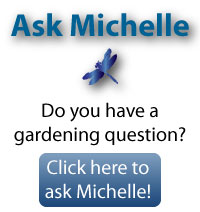Many of us are not very fond of bees. I’ve actually had customer’s request flowers that do not attract bees. I understand the thinking behind it, though this is much like requesting a dog that does not bark. You may find a quieter breed but dogs are known to bark. Most plants are not very concerned about what we think of them, their only known vanity is for the sole purpose of survival. Flowers, as we know them, are the plants way of attracting pollinators, a bit like the shiny factor. Bees, as mischievous as they may seem, are very important in regards to plant pollination and as we know, successful plant pollination creates wonderful magic! Sustainable magic, you have to appreciate that!
The Amelanchier or Serviceberry trees are flowering at this moment adorned with gorgeous petite white flowers; I anticipate their pollination as well as the delicious bounty of Serviceberries, which are usually ripe for the picking about mid June. Do you plant tomatoes? Bees pollinate those; actually bees pollinate just about 90% of our fresh food. So, no Bees, no fresh food, No Good!
Your Azaleas have Lace Fly? Do Not apply any treatment until the flowers have bloomed and faded! Why? Bees visit the flowers of your Rhododendron, Azalea and like genre. Most Lace Fly treatments, that will work quickly, will be a systemic application. Basically this is like getting a shot of penicillin from the doctor when you are sick. Just as penicillin will kill the good guys right beside the bad guys the Lace Fly treatment will harm any bee retrieving pollen or nectar from a treated plant, as well as other beneficial insects doing the same. We can take a round of pro-biotics when we have completed our penicillin but the bees do not have this luxury when exposed to insecticide as well as bacteria, fungus and mites. Bees have enough challenges to face each day, please be mindful of them, our lives depend on it!
Have you fertilized your lawn, applied crabgrass control, and fed your trees and shrubs? Well get to it, spring is almost ready to stay and in Ohio if you blink you will miss it. Now is a great time to apply grub control to your lawn and get the first mowing in if you haven’t already. Remember to keep your mowing blade sharp and only remove 1/3 of the grass blade at each mowing. It is also a good idea to change your mowing pattern each time you mow; this will prevent your lawn from lying flat because of repeated down pressure in the same direction – much like a preventable cal lick.
If you have not applied Preen to your landscape beds you may want to get busy or re-apply if you applied yours in March. Did you know they have a Preen on the market that is safe for the vegetable garden? And as long as you are not seeding your lawn you can apply preen to your lawn to prevent weed seeds such as dandelion from germinating. Preen will kill any seed that is germinating, good or bad.
Here are a few organic options to some of the previous topics:
- Use white vinegar to kill weeds in the patio, walkways and stone areas. Caution is advised when using vinegar around ornamental plants root systems as too much will affect them as well.
- Use Milky Spore to combat grubs in the lawn. Milky Spore may take up to 3-5 years to create a stable population in the lawn and will need to be maintained every 3-5 years after it has been successfully integrated.
- Use a mulching lawn mower and return your lawn clippings back to the lawn to promote more organics in the soil as well as additional Nitrogen. A healthy lawn, not necessarily a treated lawn, is the best prevention against weed or pest invasion.
- Treat Lace fly on Rhododendron, Azalea and like genre by hand washing with soapy water.
- Crabgrass is an annual so if you are tenacious enough you can quickly pull the crabgrass as you see it sprout up and before it goes to seed; your chances are very great of eradicating it for the moment. Do not try to use the vinegar on crabgrass as it will quickly go to seed and you will regret it.
- To lesson your carbon footprint use an H. motorized rotary mower – the word is they are the most environmentally friendly mower on the market. Haven’t heard of it yet? The H. stands for Human.
Of course, if you leave the dandelion and clover to make merry in your lawn, the bees will crash their party and take advantage of the bounty. Either way you win.
As we say at Northeast Ohio Garden, You have the freedom to choose!
What will you choose to create with your garden?




